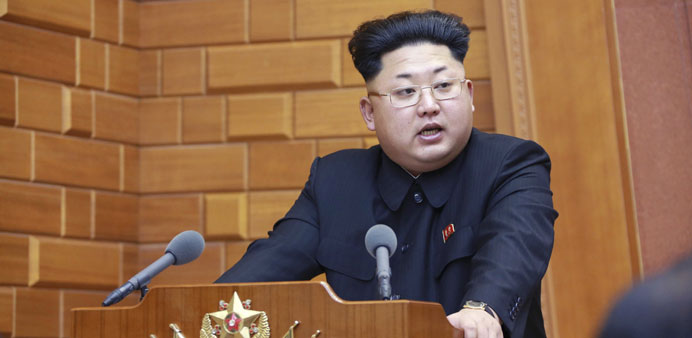AFP/Reuters/Seoul
South Korea and the United States said yesterday that they would launch their annual joint military exercises on March 2, setting the stage for a likely surge in tensions with North Korea.
Pyongyang had offered a moratorium on nuclear testing if this year’s joint drills were cancelled – a proposal rejected by Washington as an “implicit threat” to carry out a fourth nuclear test.
The Key Resolve and Foal Eagle exercises are a perennial source of tension on the divided Korean peninsula.
Seoul and Washington insist they are defensive in nature, but they are regularly condemned by Pyongyang as provocative rehearsals for invasion.
“The whole course of Key Resolve and Foal Eagle is aimed to occupy (North Korea) through preemptive strikes,” the North’s ruling party newspaper Rodong Sinmun said in an editorial yesterday.
By refusing to cancel this year’s exercises, Seoul and Washington had effectively “scuppered” any chance of resuming a dialogue with Pyongyang, the editorial said.
“What remains to be done is to militarily react to the US while bolstering up war deterrence to the maximum,” it added.
Key Resolve lasts just over a week and is a largely computer-simulated exercise. The eight-week Foal Eagle drill involves air, ground and naval field training, with around 200,000 Korean and 3,700 US troops.
Both exercises will begin on March 2, with Key Resolve lasting until March 13 and Foal Eagle winding up on April 24, South Korea’s defence ministry said.
North Korea has regularly resorted to missile tests and high-decibel bellicose rhetoric in expressing its displeasure with the exercises in the past.
In 2013, following its third nuclear test, North Korea declared the armistice agreement which ended the 1950-53 war as “invalid” in response to the exercises.
The US responded with long-range nuclear-capable B-2 bomber flights over the Korean peninsular in a show of force that it said was designed to show US ability to “conduct long-range, precision strikes quickly and at will”.
In a speech to the ruling party’s Central Military Commission at the weekend, North Korean leader Kim Jong-Un directed the army to ensure its combat-readiness in order to react to “any form of war ignited by the enemy”.
There are close to 30,000 US troops permanently stationed in South Korea and, under current arrangements, the US would take operational command of the allies’ combined forces in the event of a conflict with the North.
“Exercising our multi-national force is an important component of readiness and is fundamental to sustaining and strengthening the alliance,” General Curtis Scaparrotti, head of the allies’ Combined Forces Command, said in a statement.
“The United Nations Command has informed the Korean People’s Army in North Korea... about Foal Eagle exercise dates and the non-provocative nature of this training,” the statement said.
There was no immediate response from Pyongyang to the formal announcement of the drill dates, but South Korean defence ministry spokesman Kim Min-Seok said nothing would derail the exercises.
“North Korea’s position and provocative remarks will have no impact,” Kim told a press briefing.
Overtures for dialogue by both Koreas in recent months have stalled, with Pyongyang describing inter-Korean relations as “inching close to a catastrophe”, in a separate Rodong Sinmun article.

North Korean leader Kim has directed the army to ensure its combat readiness.
